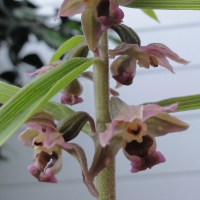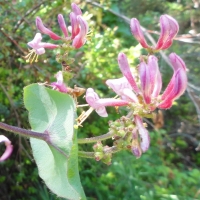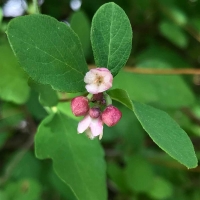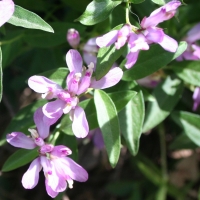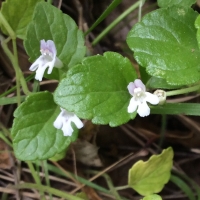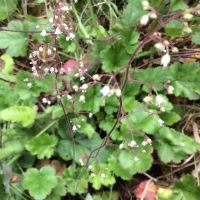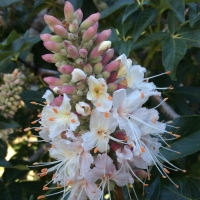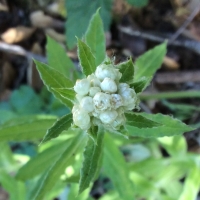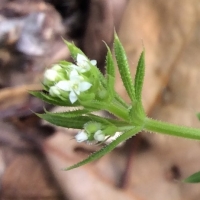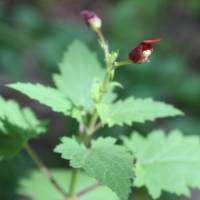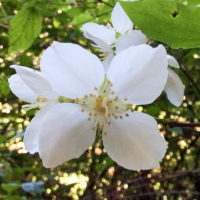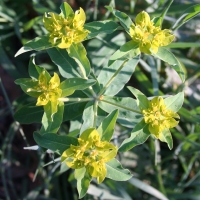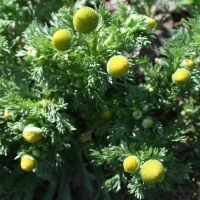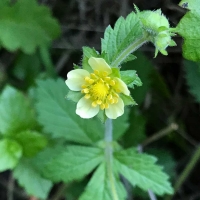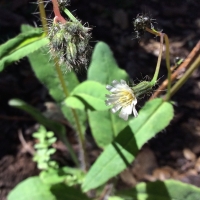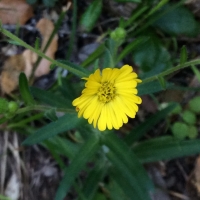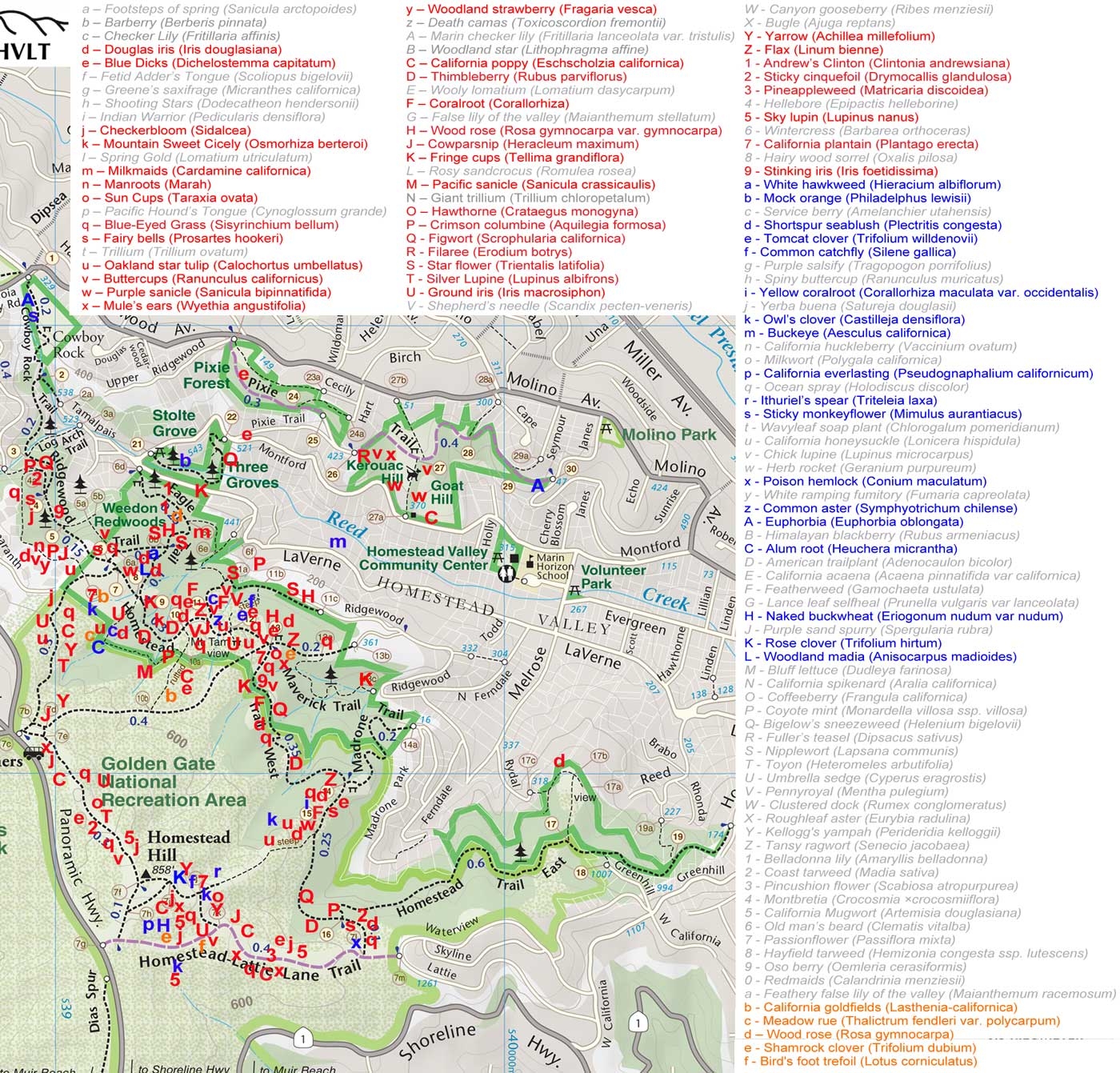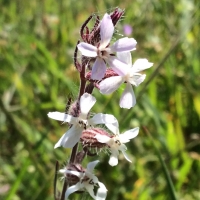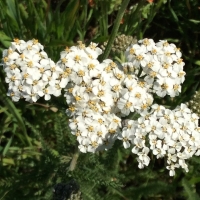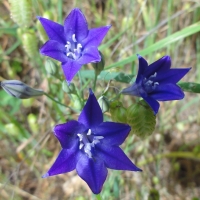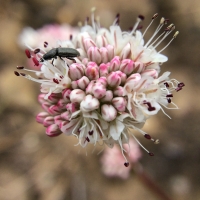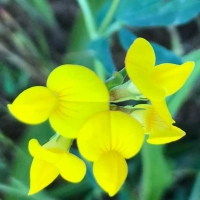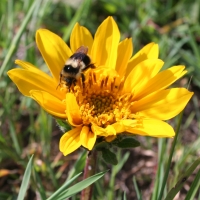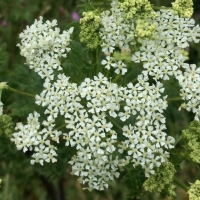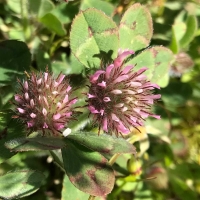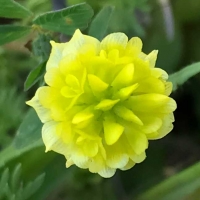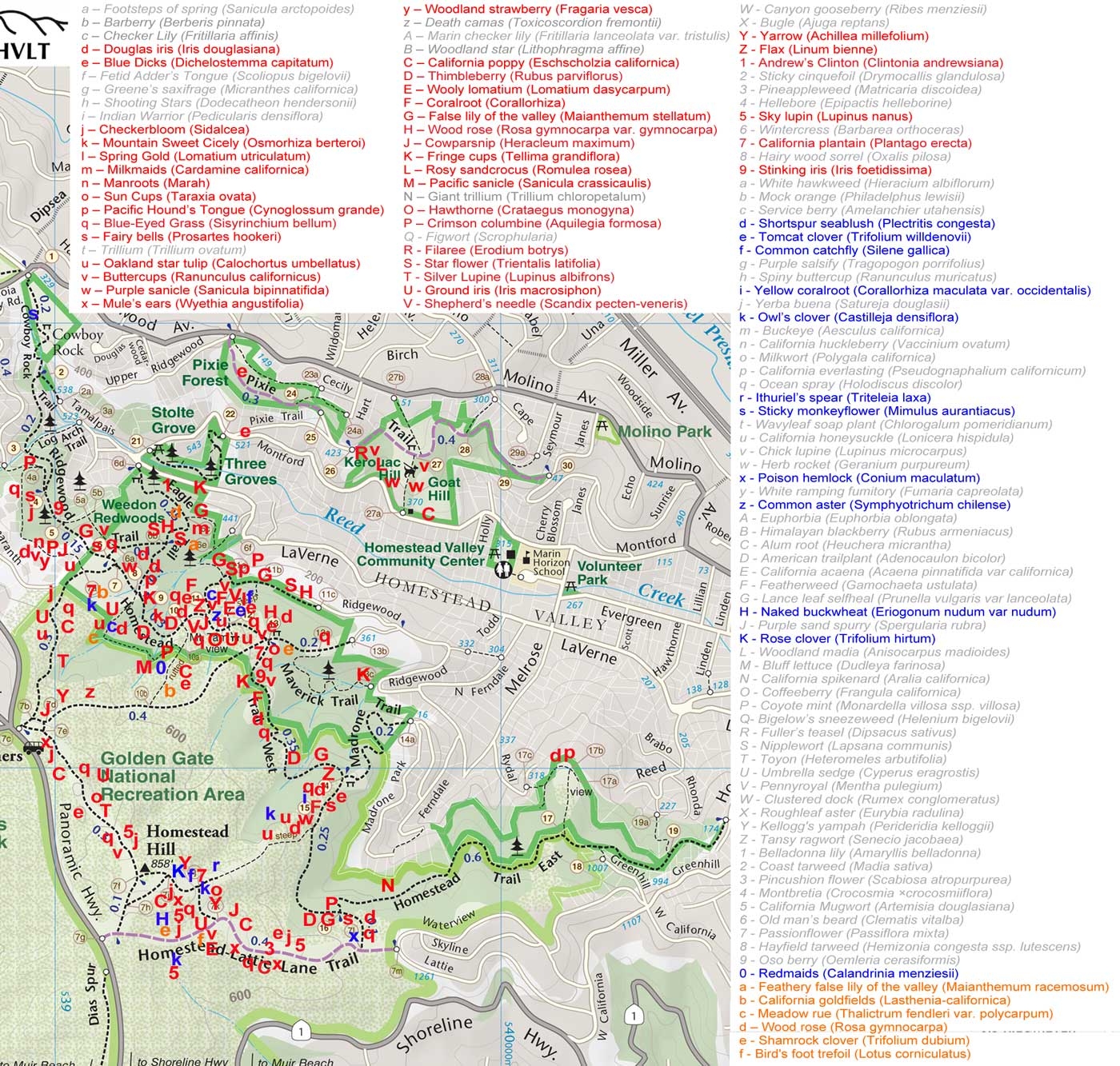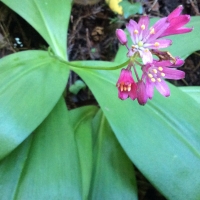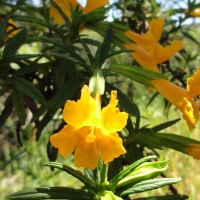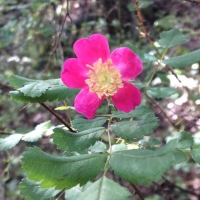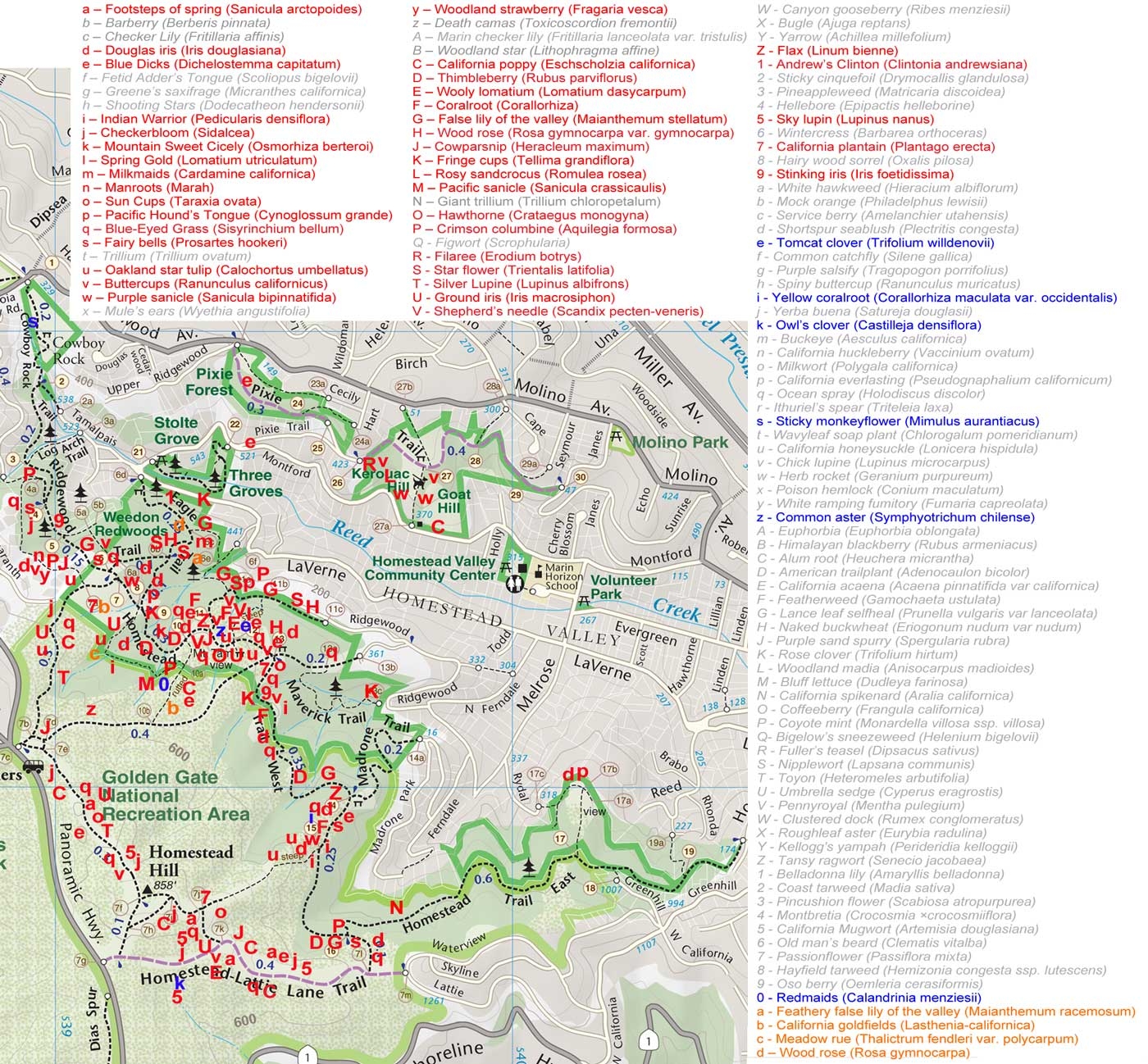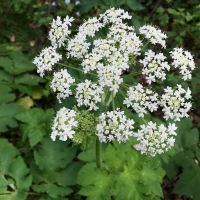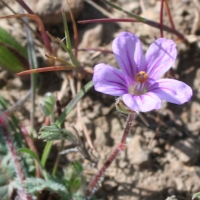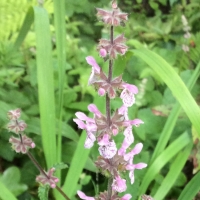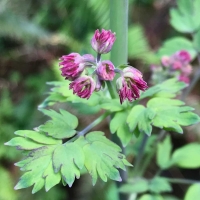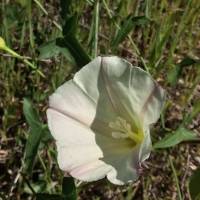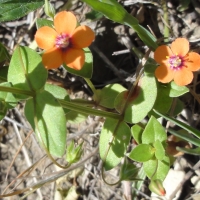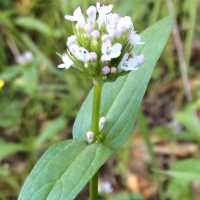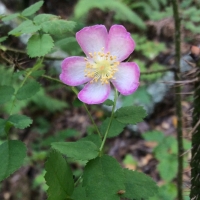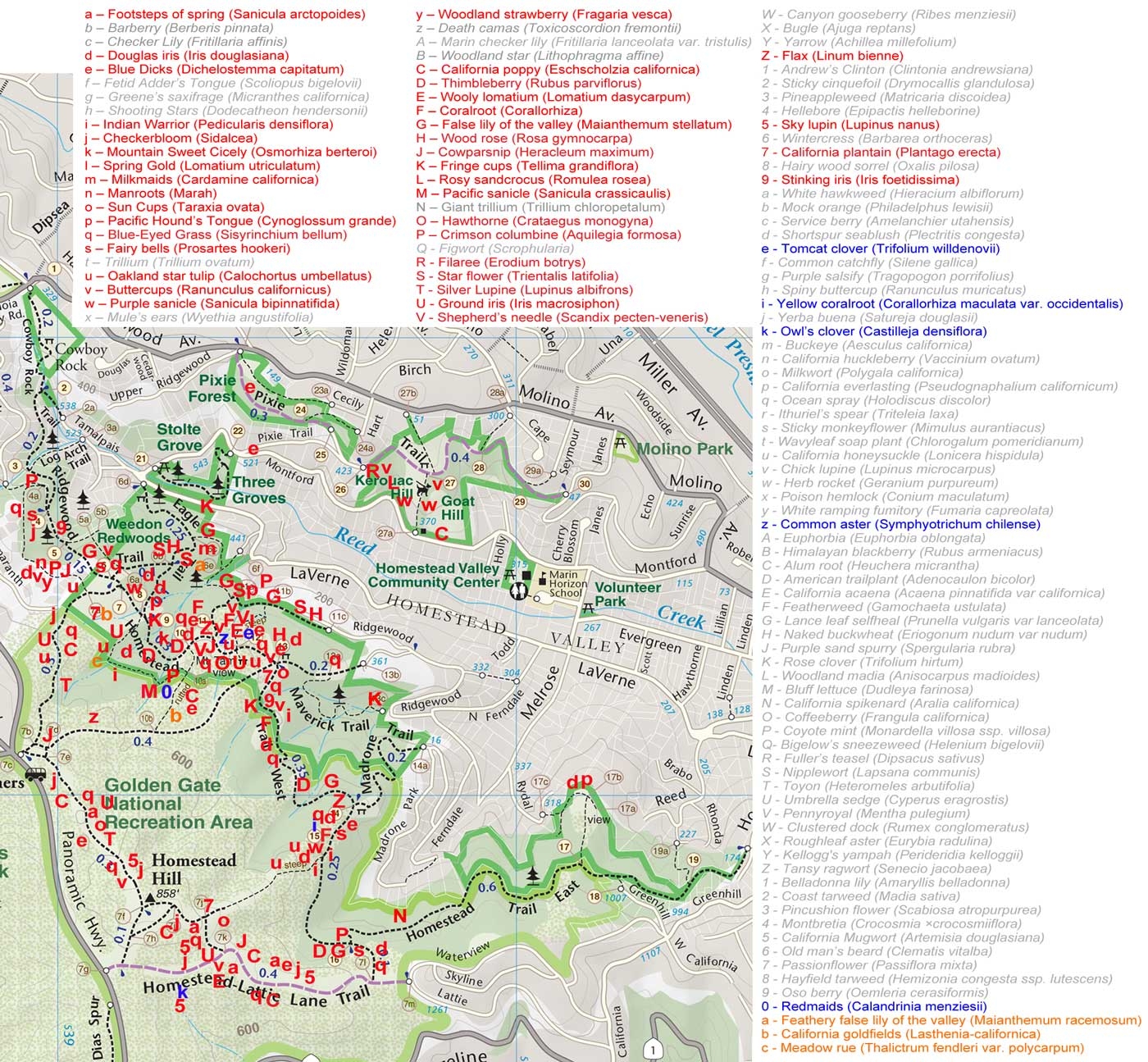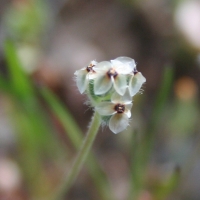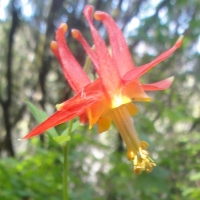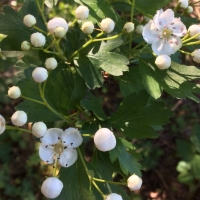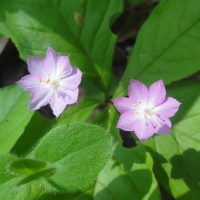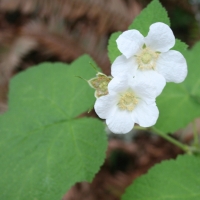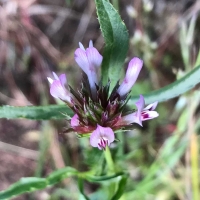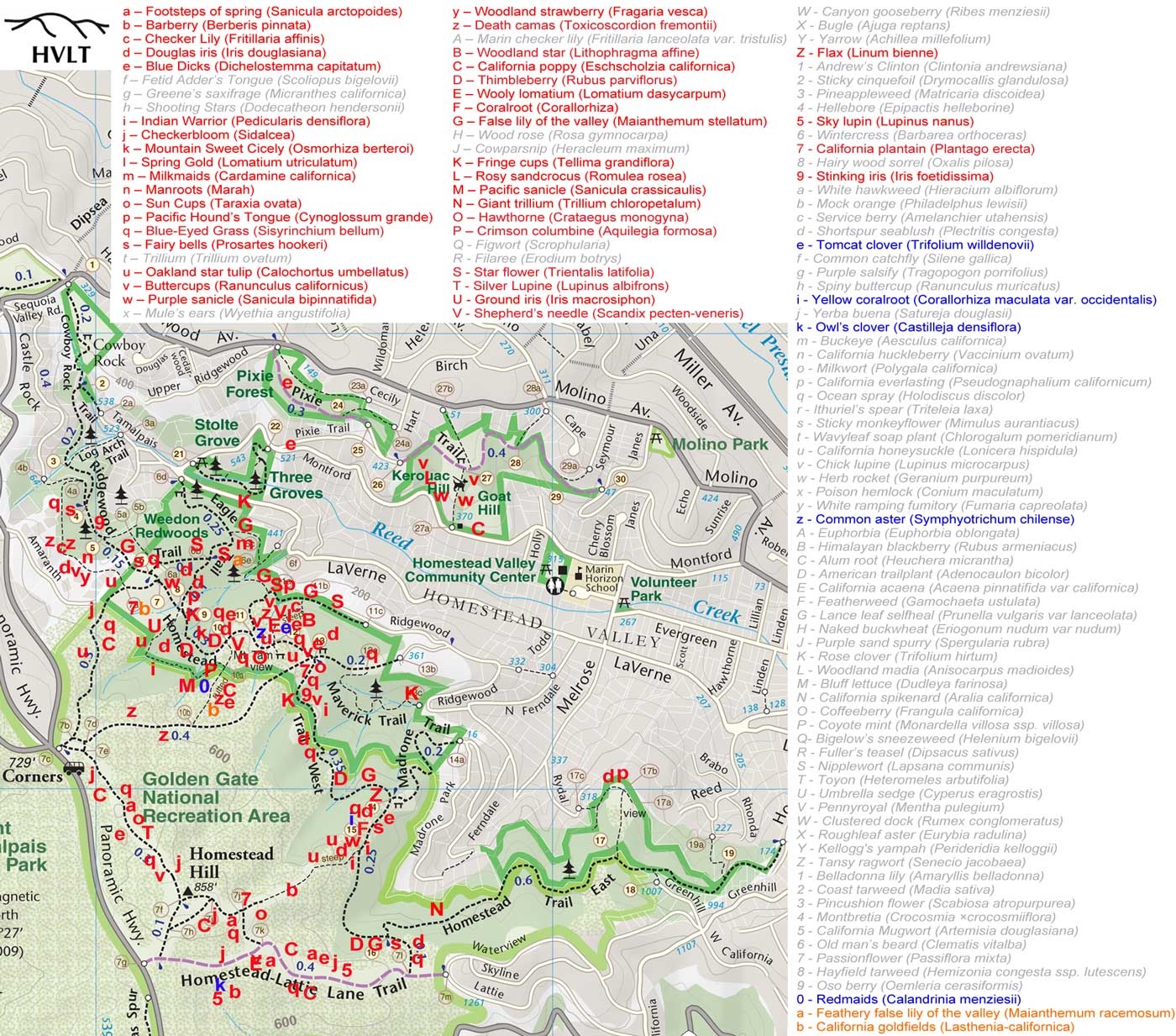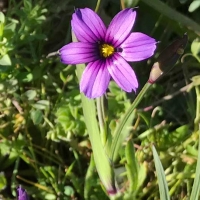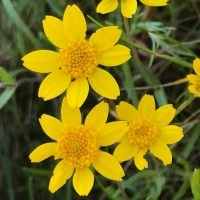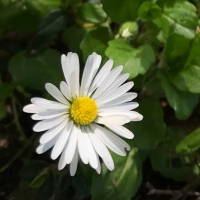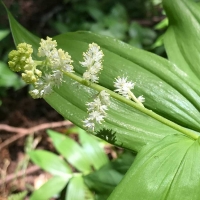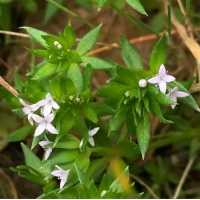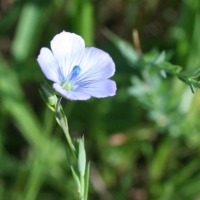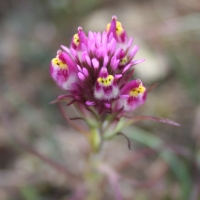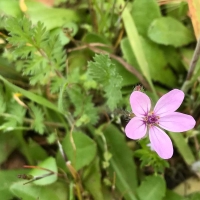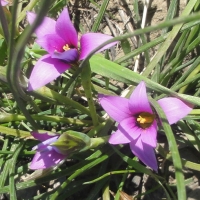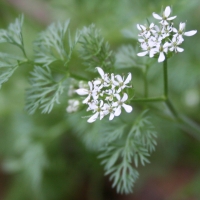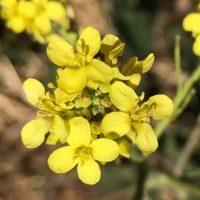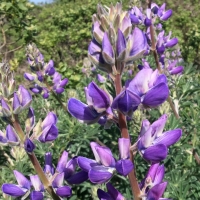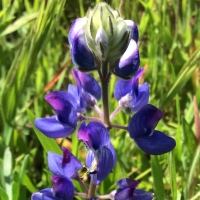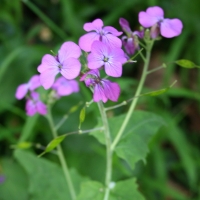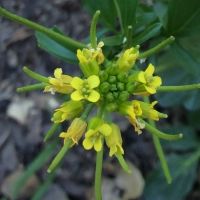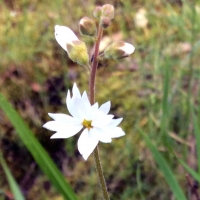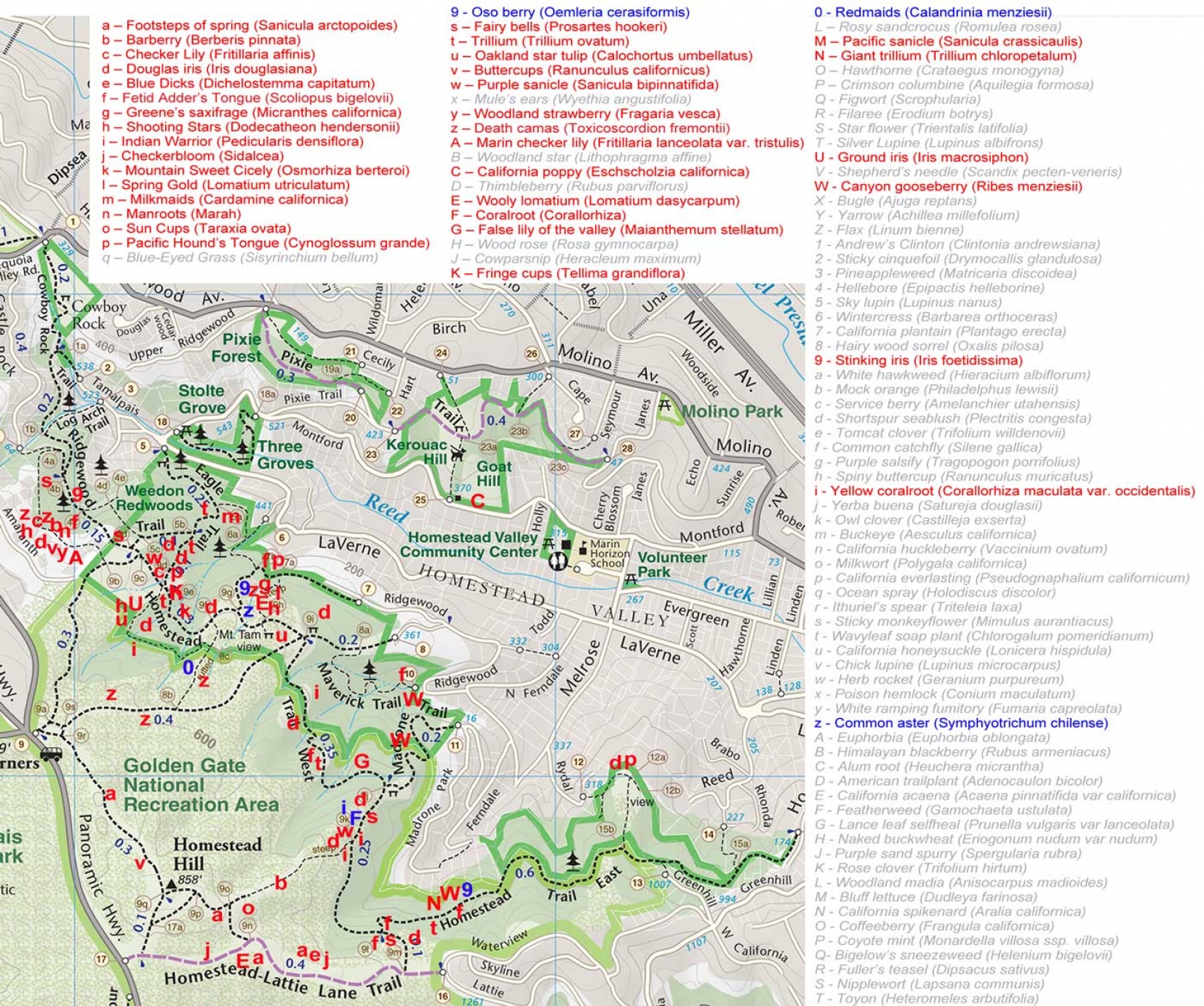NEW
– California honeysuckle has long pink finger flowers. It is a vine that climbs trees and shrubs to reach sun.
– Creeping snowberry with its pretty oval leaves is blooming with tiny pink bell flowers.
– Hellebore an orchid, is native to Eurasia. The greenish pink flowers climb a 1′ stalk.
– Milkwort has purple winglike flowers on a low plant.
– Yerba buena is a rambling, aromatic mint, delicious and plentiful in Homestead. Its small, white, butterfly-shaped flowers are blooming now.
Forests
Starting
– Cleavers has a very small white flower. The plant creeps and has small cleaving barbs.
– Crimson columbine, red with yellow heart, is a beautiful discovery in the forest or at the forest edge. It is blooming now on the Red Plum trail, near 10a and 11a.
– Hedge nettle with its tall stalk and purple flowers is blooming in the forests.
Peaking
– Andrew’s clinton, the most exotic bloom of the redwood understory, has started blooming. Its large waxy leaves and bright pink flower can be seen from the road on the bank above Laverne opposite Stolte Grove.
– Coralroot is blooming above the trail in the big Indian warrior patch. Look for it in the woods along the Homestead Trail.
– Forget-me-not* the familiar pretty little blue flower, is a European native. This is one of our most successful invasives covering the forest floor and crowding out native species.
– Fringe cups with its greenish fringed flowers is blooming in the forest beside creeks, next to the bridge on the Eagle trail near 9, along the Homestead Trail and on Laverne right after the last house.
– Pacific star flower, a member of the primrose family, is out with its pretty pink flower, its white center showing off its yellow tipped stamens. Another forest lover, it is blooming on the Eagle Trail between 6a and 6b.
– Thimbleberry, in the rose family, with its white flower and lobed leaves, is a forest shrub. The raspberry looking fruit is edible.
– White hawksweed has white feathery flowers and soft leaves. It’s blooming up on the Eagle Trail.
– Woodland madia has bright yellow flowers and is blooming on the Eagle Trail.
– Wood rose with a darker flower than our other rose is blooming on the Eagle Trail.
– Wood rose with its bright pink flowers is up at eye level along the forest paths.
Fading
– Fairy Bells will bloom for months. Flower bells hang under the leaves and are usually impossible to see from our vantage, so turn over the leaves and peak underneath.
Forest Edges
Starting
– Alum root, with geranium-shaped leaves and a white foamy flower is blooming along the creek near the Meadow rue on the Upper Eagle Trail.
– Blue eyed grass, not a grass but a member of the iris family, is blooming deep blue/purple up on the ridge and in meadows at the forest edge.
– Buckeye trees are starting to bloom. See them along Laverne.
– Common California aster is blooming on the Homestead trail.
– Cow parsnip, this tall plant with large white umbels is blooming at the forest edge.
Peaking
– Douglas iris is blooming with purple and white blooms everywhere, in meadows and along forest trails.
– English daisy, a European native, is blooming below Amaranth.
– Figwort, with its small maroon flower is blooming in forest edges. This plant is a favorite of butterflies.
– Manroots or wild cucumber is a native vine with white flowers that is blooming all over.
– Mock orange with its wonderful scented flowers is blooming in Three Groves.
– Pacific sanicle with its rich foliage and unspectacular dull yellow flower is blooming along the Homestead Trail.
– Sticky cinquefoil looks like strawberry but tall and with a cream flower.
– Woodland strawberry is common at the forest edges.
Fading
– Meadow rue has a pretty pink flower atop a tall stalk with lacy leaves and is blooming in the creek on the Upper Eagle trail.
– Milkmaids, is a member of the mustard/radish family (edible).
– Wood sweet cicely is abundant along all the woodland paths. Its small white blooms are appearing now. Once it goes to seed, the tender pods make a delicious trail snack.
Meadows
Starting
– Bird’s foot trefoil, native of Europe, is a small, yellow pea-shaped flower.
– Buttercup is blooming on the ridge and in some of the lower meadows.
– California everlasting is blooming with its paper-like white blooms up on the ridge.
– California plantain, this tiny plant has needle-like leaves and translucent flowers clustered on a stalk. It’s blooming in a large patch above the junction at 13 and in meadows.
– California poppy is showing its orange bell flower in the meadows.
– Checkerbloom is blooming up on the ridge near the patches of blue dicks.
– Common catchfly, native of Eurasia and North Africa, is a windmill white flower on a tall stalk with a striped pod.
– Common vetch, a native of the Mediterranean, is the purple pea blooming in the meadows
– Common Yarrow is a white flowered umbel with feathery leaves. It’s a sun lover and is blooming on the ridge now but will be out it all the meadows soon.
– Euphorbia, native of Eurasia, is blooming in Pixie and Cowboy Rock meadows.
– Field madder, native to Europe and North Africa, is a tiny purple star flower in meadows.
– Filaree, a small purple flower native to the Mediterranean, is blooming in meadows.
– Flax, native to the Mediterranean region, is a pale blue flower at the end of a long stalk.
– Ithuriel’s spear, a bright blue funnel is blooming up on the ridge now and will show up in lower meadows soon.
– Mule’s ear, a yellow sunflower, is blooming in ridge meadows.
– Naked buckwheat is blooming up in ridge meadows now.
– Owl clover, not a clover but an Indian paintbrush, is blooming on the knoll below Homestead Hill.
– Pineappleweed with its pincushion yellow flowers, smells like chamomile when crushed, is edible and medicinal.
– Poison hemlock, native to Europe, has white umbel flowers. Its stalk is mottled red hinting at the toxicity of this plant.
– Purple sanicle is blooming on the Eagle trail below Amaranth and near the Indian warrior patch.
– Purple western morning glory is blooming in meadows up on the ridge and on Kerouac Hill.
– Red stemmed filaree, a native of the Mediterranean basin, is blooming purple in the meadows.
– Rose clover, native to the Mediterranean basin, is blooming up on the ridge.
– Scarlet pimpernel, native to the Mediterranean basin, is a common little orange splash in the meadow grasses.
– Shamrock clover, native of Europe, has a bright yellow flower and is blooming along trails in meadows.
– Silver lupine, a big bush lupin is starting to bloom up on the ridge.
– Sky lupine, a bright blue and white lupine, grows in single stalks close to the ground.
– Sticky monkeyflower is blooming on Cowboy Rock. This is a sun loving plant that will bloom through the summer.
– Sun cups is a bright yellow close to the ground in the meadows.
– Wild radish, native to Asia, is blooming with purple flowers in the meadows on the ridge.
– Wild mustard, a Mediterranean native, is a tall yellow flower in meadows up on the ridge. The flowers are edible.
Peaking
– Blue dicks, a soft blue cluster at the end of a long stem is bobbing blue on the ridge trail and down in the brighter places along the Homestead Trail.
– Ground iris is blooming purple in meadows.
– Oakland star tulip, one of the rare plants in Homestead, is blooming along the trails, and in meadows.
– White flowered onion*, native to the Mediterranean basin, is blooming in gutters and wet places. All parts of the plant from the bulb to the flower are edible.
Fading
– California goldfields carpets the side of the trail yellow on the 4-Corners spur and above the Old Eagle trail.
– Shortspur seablush grows in groups and is flowering on the Ridgewood Rock and the Upper Eagle.
Key to map:
I haven’t located plants on on the map if they are very prolific. Find them by their habitat.
Flowers that are not currently blooming have been removed from the map and are greyed out in the map key.
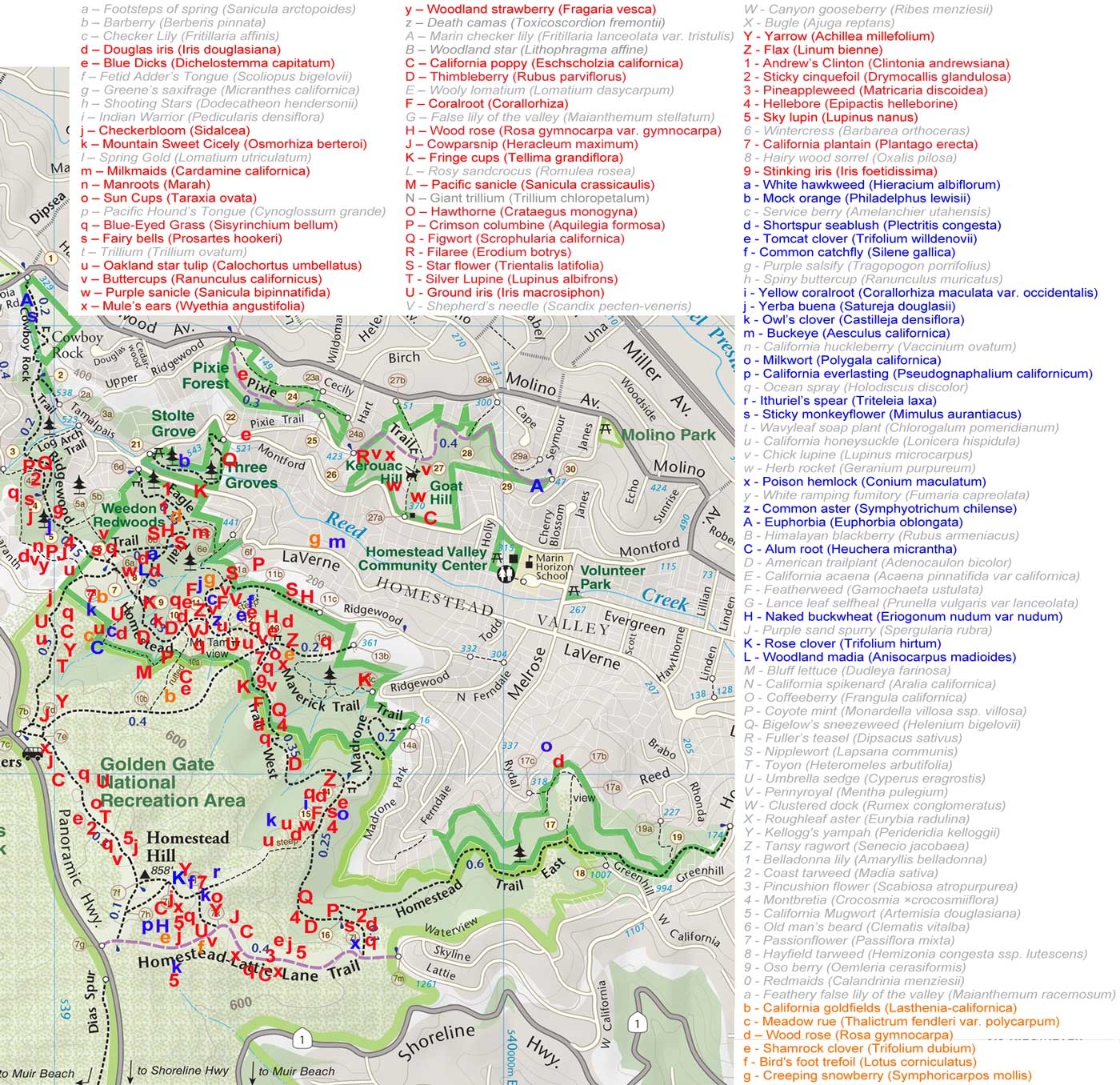
Gallery of wildflowers and plants found in Homestead.
*Non-native
Share this: